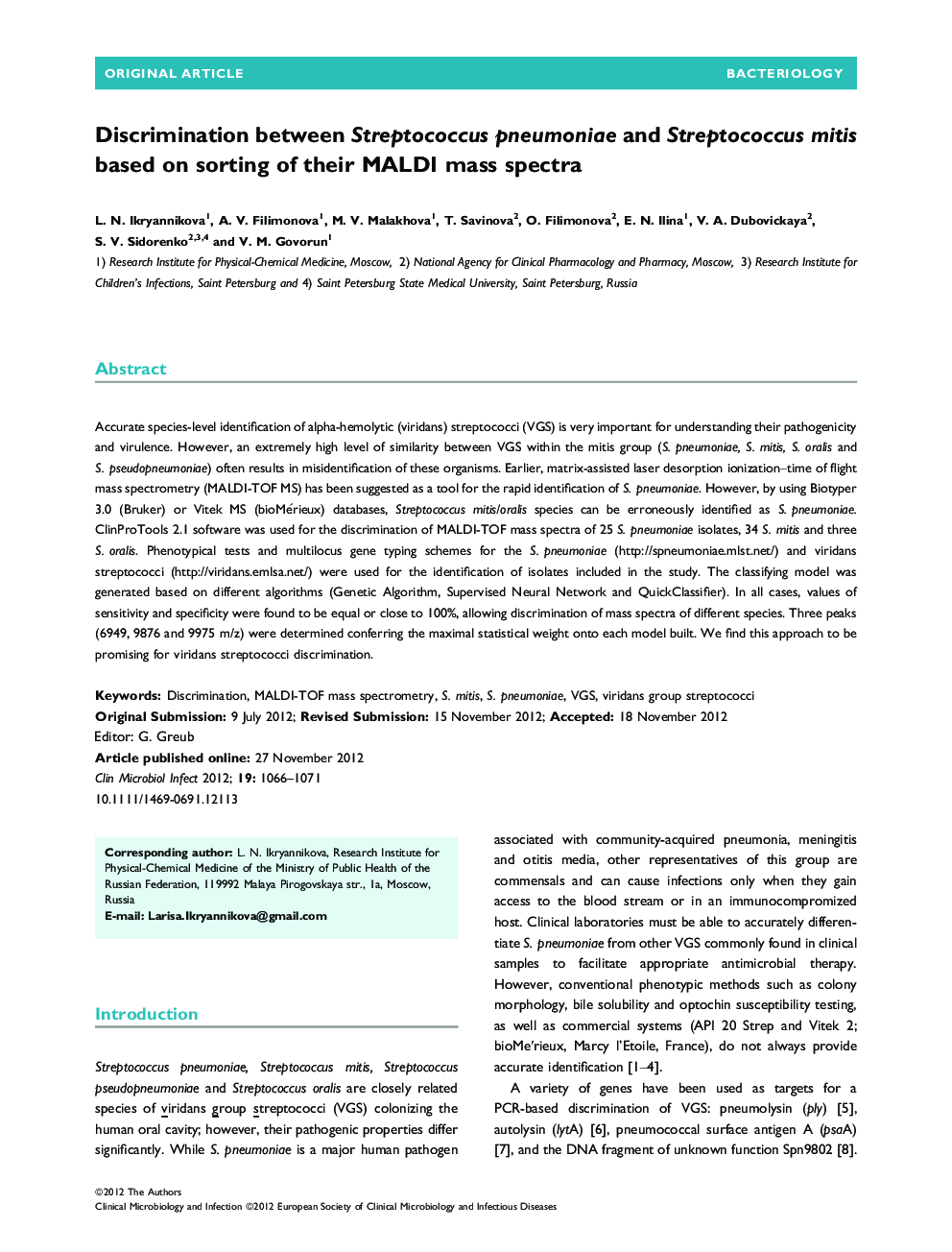| Article ID | Journal | Published Year | Pages | File Type |
|---|---|---|---|---|
| 3396651 | Clinical Microbiology and Infection | 2013 | 6 Pages |
Accurate species-level identification of alpha-hemolytic (viridans) streptococci (VGS) is very important for understanding their pathogenicity and virulence. However, an extremely high level of similarity between VGS within the mitis group (S. pneumoniae, S. mitis, S. oralis and S. pseudopneumoniae) often results in misidentification of these organisms. Earlier, matrix-assisted laser desorption ionization–time of flight mass spectrometry (MALDI-TOF MS) has been suggested as a tool for the rapid identification of S. pneumoniae. However, by using Biotyper 3.0 (Bruker) or Vitek MS (bioMérieux) databases, Streptococcus mitis/oralis species can be erroneously identified as S. pneumoniae. ClinProTools 2.1 software was used for the discrimination of MALDI-TOF mass spectra of 25 S. pneumoniae isolates, 34 S. mitis and three S. oralis. Phenotypical tests and multilocus gene typing schemes for the S. pneumoniae (http://spneumoniae.mlst.net/) and viridans streptococci (http://viridans.emlsa.net/) were used for the identification of isolates included in the study. The classifying model was generated based on different algorithms (Genetic Algorithm, Supervised Neural Network and QuickClassifier). In all cases, values of sensitivity and specificity were found to be equal or close to 100%, allowing discrimination of mass spectra of different species. Three peaks (6949, 9876 and 9975 m/z) were determined conferring the maximal statistical weight onto each model built. We find this approach to be promising for viridans streptococci discrimination.
